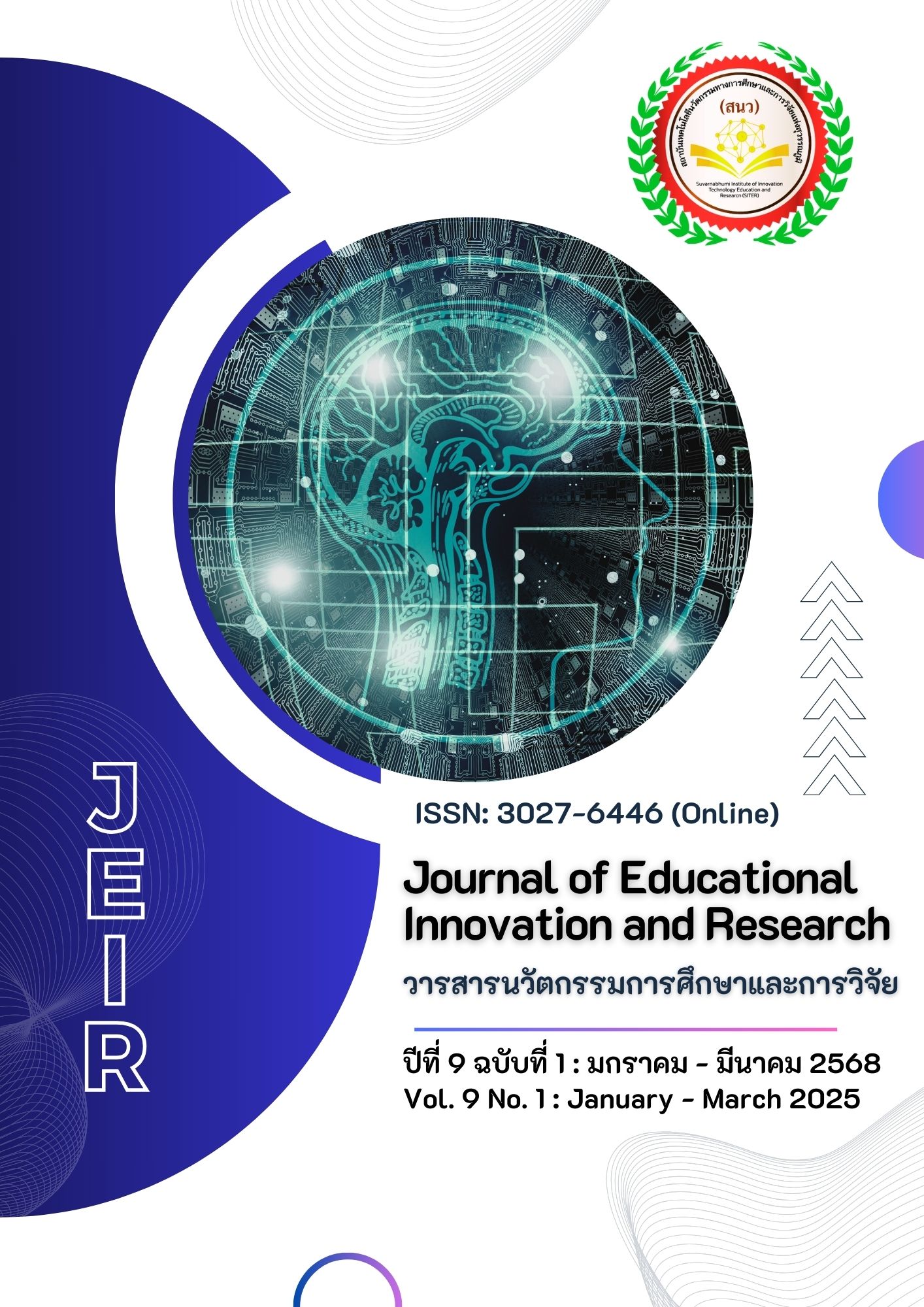การวิเคราะห์องค์ประกอบเชิงยืนยันความตั้งใจซื้อซ้ำในเทศกาลช้อปปิ้งออนไลน์ ในประเทศไทย
Main Article Content
บทคัดย่อ
บทความนี้มีวัตถุประสงค์ 1) เพื่อพัฒนาองค์ประกอบเชิงยืนยันความตั้งใจซื้อซ้ำในเทศกาลช้อปปิ้งออนไลน์ ในประเทศไทย 2) เพื่อตรวจสอบความสอดคล้องระหว่างโมเดลโครงสร้างองค์ประกอบเชิงยืนยันความตั้งใจซื้อซ้ำในเทศกาลช้อปปิ้งออนไลน์ ในประเทศไทย รูปแบบการวิจัยเป็นการวิจัยเชิงปริมาณใช้แนวคิดการวิเคราะห์องค์ประกอบเชิงยืนยันเป็นกรอบการวิจัย พื้นที่วิจัย คือประเทศไทย กลุ่มตัวอย่างคือผู้มีประสบการณ์ซื้อสินค้าในเทศกาลช้อปปิ้งออนไลน์ จำนวน 340 คน จากผู้ที่มีประสบการณ์ในเทศกาลช้อปปิ้งออนไลน์ ภายใน 6 เดือนโดยวิธีคัดเลือกแบบสะดวก เครื่องมือที่ใช้ในการวิจัย คือแบบสอบถามออนไลน์ วิเคราะห์ข้อมูลโดยใช้ การวิเคราะห์องค์ประกอบเชิงยืนยัน ผลการวิจัยพบว่า
องค์ประกอบเชิงยืนยันความตั้งใจซื้อซ้ำในเทศกาลช้อปปิ้งออนไลน์ ในประเทศไทย ประกอบด้วย4 องค์ประกอบ คือ 1) การสื่อสารเชิงความรับผิดชอบต่อสังคมขององค์กร 2) คุณภาพที่รับรู้ 3) ความภักดีต่อแบรนด์และ 4) ความตั้งใจซื้อซ้ำ ซี่งพบว่าโมเดลโครงสร้างองค์ประกอบมีความสอดคล้องกลมกลืนกับข้อมูลเชิงประจักษ์อย่างมีนัยสำคัญทางสถิติที่ระดับ .01 ทุกตัว
ข้อค้นพบนี้เป็นจุดเริ่มต้นสำหรับนักวิจัยและผู้ที่สนใจพัฒนาต่อยอดกลยุทธ์การตลาดในมิติการสื่อสารเชิงความรับผิดชอบต่อสังคมขององค์กร การสร้างการรับรู้ด้านคุณภาพของแบรนด์ การสร้างความภักดีต่อแบรนด์และการซื้อซ้ำในเทศกาลช้อปปิ้งออนไลน์ต่อไป
Article Details

อนุญาตภายใต้เงื่อนไข Creative Commons Attribution-NonCommercial-NoDerivatives 4.0 International License.
เอกสารอ้างอิง
Aaker, D. A. (1991). Managing brand equity: Capitalizing on the value of a brand name. Free Press.
Aaker, D. A. (1996). Measuring brand equity across products and markets. California Management Review, 38(3), 102-20.
Al-Falahy, N., & Alani, O. (2018, February 13). Improved Capacity and Fairness of Massive MaChine Type Communications in Millimeter Wave 5G Network. Computers, 7(1), 16.
Aquinia, A., SoLiha, E., Liana, L., & Wahyudi, D. (2021, March 13). The role of perceived quaLity and brand loyalty influencing repurchase intention. Advances in Economics, Business and Management Research, 145(1), 76-82.
Baldinger, A.L., & Rubinson, J. (1996). Brand loyalty: The Link between attitude and behavior. Journal of Advertising Research, 36, 22-34.
Breves, P. L., Liebers, N., Abt, M., & Kunze, A. (2019). The perceived fit between Instagram influencers and the endorsed brand: How influencer–brand fit affects source credibility and persuasive effectiveness. Journal of Advertising Research, 59(4), 542-557.
Chi, Y. H., Yeh, C. H., & Yang, S. H. (2009). The impact of brand awareness on consumer purchase intention: The mediating effect of perceived quality and brand loyalty. Journal of International Management Studies, 4(1), 135-144.
Durana, P., Majerova, J., & Mišanková, M. (2019). The Quality of Brand Products: Expected Attributes vs. Perceived ReaLity. Economics and Culture, 16(1), 98-107.
Engel, J. F. Blackwell, R. D., & Miniard, P. W. (1995). Consumer behavior (8th ed.) The Dryden.
Fishbein, M., & Ajzen, I. (1975). Belief, attitude, intention, and behavior: an introduction to theory and research. Addison-Wesley
Hair, J. F., Black, W. C., Babin, B. J., & Anderson, R. E. (2010). Multivariate Data Analysis. 7th Edition. Prentice Hall.
Kamboh, M. A., ALi, S., Mahmood, A., & Kamboh, A. Z. (2020). The Brand Loyalty. DOI: 10.13140/RG.2.2.12432.15369
Kim, J. J., Kim, H. M., & HWang, J. (2022). Consequences of brand modernity in the coffee industry: The moderating role of human barista and robot barista. Journal of Hospitality and Tourism Technology, https://www.emerald.com/insight/content/doi/10.1108/JHTT-08-2021-0239/full/html?skipTracking=true
Koernig, S. K., & Boyd, T. C. (2009). To catch a tiger or let him go: The match-up effect and athlete endorsers for sport and non-sport brands. Sport Marketing Quarterly, 18(1), 25-37.
Kotler, P. (2003). Marketing Management (11th ed.). New Jersey: Prentice Hall.
Li, J., Zhu, A., Liu, D., Zhao, W., Zhou, Y., Chen, Y., Liu, Y., & Sun, N. (2020). Sustainability of China’s Singles Day Shopping Festivals: Exploring the Moderating Effect of Fairness Atmospherics on Consumers’ Continuance Participation. Sustainability, 12(7), 2644.
Lyu, L., Zhai, L., Boukhris, M., & Akbar, A. (2023). Impact of corporate social responsibility practices on impulse buying intention: Exploring the moderating influence of social media advertising. SustainabiLity, 15(23), 16258.
Mann, M., Byun, S. E., & Ginder, W. (2021). B Corps’ Social Media Communications during the COVID-19 Pandemic: Through the Lens of the Triple Bottom Line. Sustainability, 13(17), 1-21.
Mitra, D., & Golder, P. N. (2006, May). How does objective quality affect perceived quality? Short-term effects, long-term effects, and asymmetries. Marketing Science, 25(3), 230-247.
MOHR, L. A., WEBB, D. J., & HARRIS, K. E. (2001). Do Consumers Expect Companies to be Socially Responsible? The Impact of Corporate Social Responsibility on Buying Behavior. The Journal of Consumer Affairs, 35(1), 45–72.
MoLinillo, S., Japutra, A., & Ekinci, Y. (2022). Building brand credibility: The role of involvement, identification, reputation, and attachment. Journal of Retailing and Consumer Services, 64(C), 102819.
Mowen, J. C., & Minor, M. (2001). Consumer behavior: A framework (2nd ed.). Prentice-Hall.
OLiver, Richard L. (1999). Whence Consumer Loyalty?. Journal of Marketing, 63, 33-44.
Princes, E., Manurung, A. H., So, I. G., & Abdinagoro, S. B. (2020). The Next Level of Purchase Intention. https://www.researchgate.net/pubLication/341651124_The_Next_Level_of_Purchase_Intention
Schneewind, A., & Sharkasi, N. (2022). Analysis of the Impact of Brand Fit on Perceived CredibiLity of Social Media Influencers by European Millennials. Advances in Digital Marketing and eCommerce (pp. 191-207). Tokyo International University. DOI: 10.1007/978-3-031-05728-1_22
Shahmohammadi, S., SteinMann, Z. J. N., Tambjerg, L., van Loon, P., King, H. M., & Huijbregts, M. A. J. (2020). Comparative greenhouse gas foot printing of online versus traditional shopping for fast-moving consumer goods: A stochastic approach. Environmental Science & Technology, 3499-3509. https://doi.org/10.1021/acs.est.9b06252
Statista. (2023, March 14). Thailand: Number of monthly web visits to Lazada, by quarter. Retrieved from https://www.Statista.com/statistics/1007132/Thailand-number-monthly-web-visits-lazada-quarter/
Statista. (2023, March 14). Thailand: Number of monthly web visits to Shopee, by quarter. Retrieved from https://www.Statista.com/statistics/1007161/Thailand-number-monthly-web-visits-shopee-quarter/
Wang, Y. J., Minor, M. S., & Wei, J. (2010). Aesthetics and the online shopping environment: Understanding consumer responses. Journal of Retailing, 86(4), 439-450.
Wijarnoko, M. A., Pramana, E., & Santoso, J. (2023). Factors That Influence Repurchase Intention: A Systematic Literature Review. Teknika, 12(3), 252-260.
Xie, J., Yoon, N., & Choo, H. J. (2023). How online shopping festival atmosphere promotes consumer participation in China. Fashion and Textiles, 10(5), 1–12.


